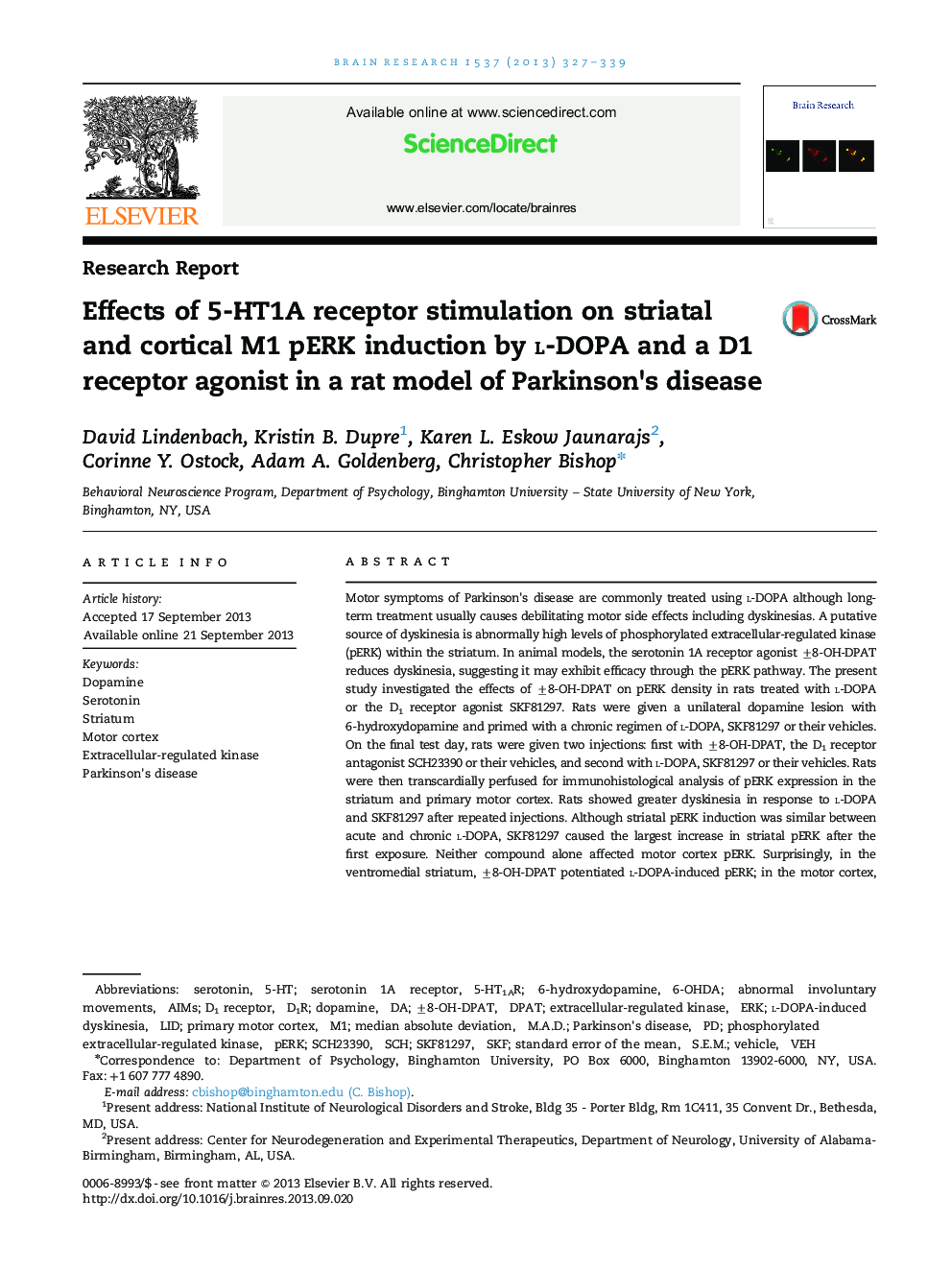| Article ID | Journal | Published Year | Pages | File Type |
|---|---|---|---|---|
| 6263578 | Brain Research | 2013 | 13 Pages |
â¢5-HT1AR activation potentiated pERK activity in the striatum and M1.â¢Serotonin and DA drugs had large effects on striatal pERK only if DA was depleted.â¢Induction of striatal pERK by a D1R agonist was highest on the first dose.â¢Increase in striatal pERK by l-DOPA was constant across test days.
Motor symptoms of Parkinson's disease are commonly treated using l-DOPA although long-term treatment usually causes debilitating motor side effects including dyskinesias. A putative source of dyskinesia is abnormally high levels of phosphorylated extracellular-regulated kinase (pERK) within the striatum. In animal models, the serotonin 1A receptor agonist ±8-OH-DPAT reduces dyskinesia, suggesting it may exhibit efficacy through the pERK pathway. The present study investigated the effects of ±8-OH-DPAT on pERK density in rats treated with l-DOPA or the D1 receptor agonist SKF81297. Rats were given a unilateral dopamine lesion with 6-hydroxydopamine and primed with a chronic regimen of l-DOPA, SKF81297 or their vehicles. On the final test day, rats were given two injections: first with ±8-OH-DPAT, the D1 receptor antagonist SCH23390 or their vehicles, and second with l-DOPA, SKF81297 or their vehicles. Rats were then transcardially perfused for immunohistological analysis of pERK expression in the striatum and primary motor cortex. Rats showed greater dyskinesia in response to l-DOPA and SKF81297 after repeated injections. Although striatal pERK induction was similar between acute and chronic l-DOPA, SKF81297 caused the largest increase in striatal pERK after the first exposure. Neither compound alone affected motor cortex pERK. Surprisingly, in the ventromedial striatum, ±8-OH-DPAT potentiated l-DOPA-induced pERK; in the motor cortex, ±8-OH-DPAT potentiated pERK with l-DOPA or SKF81297. Our results support previous work that the striatal pERK pathway is dysregulated after dopamine depletion, but call into question the utility of pERK as a biomarker of dyskinesia expression.
